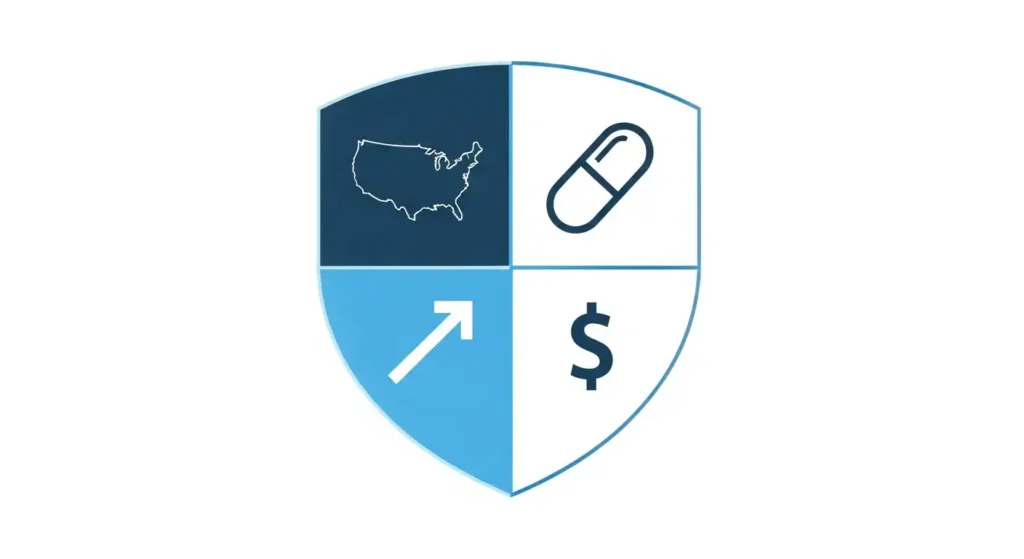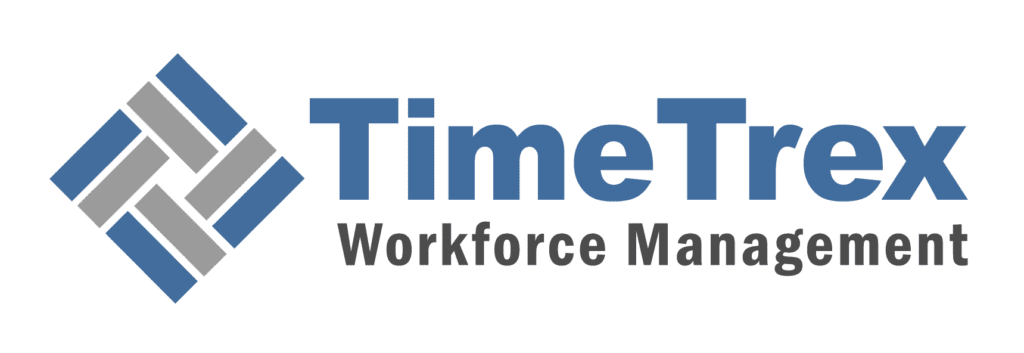
New U.S. Pharmaceutical Tariffs
In late September 2025, the United States announced a dramatic shift in trade policy, introducing new U.S. pharmaceutical tariffs that could reshape the global drug manufacturing landscape. This article provides a comprehensive analysis of the new 100% ad valorem tariff on imported branded and patented pharmaceuticals. We delve into the policy's core "invest-or-tariff" ultimatum, its impact on international trade partners like the EU and India, and the significant economic consequences for U.S. consumers and the healthcare system. Understanding these new drug tariffs is crucial for anyone involved in pharmaceuticals, supply chain management, and international business.
Tariff on Imported Branded & Patented Drugs
TL;DR
On September 25, 2025, the U.S. announced a 100% tariff on imported "branded or patented" pharmaceuticals, effective October 1, 2025. This policy, based on national security grounds, is designed to compel drugmakers to build manufacturing plants in the U.S. An exemption is granted to companies actively building facilities in America, creating an "invest-or-tariff" choice. The policy disproportionately affects high-value European exporters (Ireland, Switzerland, Germany) but largely insulates generic drug producers like India. While a pre-existing deal caps tariffs for the EU at 15%, the initial 100% threat served as a powerful negotiating tactic. Domestically, the tariffs risk increasing drug prices, raising insurance premiums, and disrupting supply chains, conflicting with goals to lower healthcare costs. The policy will force a strategic re-evaluation of global supply chains, favoring resilience and onshoring over pure economic efficiency.
Article Index
The New US Pharmaceutical Tariff Regime: An Overview
The new U.S. tariff policy on pharmaceuticals was introduced not through formal executive orders or regulatory filings but via a series of posts on social media. This unconventional method of policy dissemination has created a landscape of significant uncertainty, defined by a stark financial ultimatum and a set of strategically ambiguous terms that grant the administration considerable discretionary power.
Deconstruction of the Presidential Announcement: Rate, Scope, and Timeline
On September 25, 2025, U.S. President Donald Trump announced that, effective October 1, 2025, the United States would impose a 100% ad valorem tariff on imported "branded or patented" pharmaceutical products. This announcement was the culmination of months of increasingly protectionist rhetoric. The final 100% rate, while extraordinarily high, was lower than some extreme figures that had been floated, which may explain the relatively muted negative reaction in the stock prices of some large pharmaceutical companies.
The scope of the tariff is explicitly targeted at "branded or patented" drugs. This is intended to exempt the vast majority of medicines consumed in the United States by volume. Generic drugs, which account for approximately 90% of all prescriptions filled in the U.S., are not included. The targeted products include a wide array of high-value medications for conditions ranging from hypertension and diabetes to specialized therapies for cancer and viral infections.
Generics vs. Branded Drugs in the U.S.
The vast majority of prescriptions are for generic drugs, which are exempt from the new tariffs. This focuses the policy's impact on a smaller, but higher-cost, segment of the market.
The "Invest-or-Tariff" Ultimatum: Defining the Manufacturing Exemption
The central mechanism of the policy is the condition for its avoidance. The announcement specifies that the 100% tariff will not apply to any company that "IS BUILDING their Pharmaceutical Manufacturing Plant in America". This clause transforms a punitive trade measure into a coercive instrument of industrial policy. It presents companies with a clear ultimatum: make substantial capital investments in U.S.-based manufacturing or be priced out of the U.S. market.
The Domestic Manufacturing Gamble
The policy presents a stark choice: absorb a massive tariff or make significant capital investments in U.S. manufacturing to gain an exemption.
Option 1: Pay the Tariff
Continue foreign manufacturing and pay the 100% import tax, leading to doubled drug prices and loss of market share.
Option 2: Build in the U.S.
Invest billions in new domestic facilities to avoid the tariff, requiring long-term commitment and capital.
The administration provided a preliminary definition for "IS BUILDING" as having either "breaking ground" or being "under construction". A subsequent clarification suggested that companies that have merely announced plans to build U.S. facilities would also qualify for an exemption while their projects undergo review.
Critical Ambiguities and Their Strategic Implications
The most critical area of uncertainty lies in the definition of a "branded" pharmaceutical product. The administration has not provided a precise legal definition, creating a substantial risk for exporters of "branded generics." As noted by the Global Trade and Research Initiative (GTRI), this remains a major point of confusion pending official U.S. legal documentation. This deliberate vagueness appears to be a strategic feature, granting agencies immense discretionary power to interpret the rules on a case-by-case basis and use the tariff as a flexible negotiating lever.
| Policy Element | Description |
|---|---|
| Tariff Rate | 100% ad valorem tariff on specified imported pharmaceutical products. |
| Products Covered | "Branded or patented" pharmaceutical products. Generic drugs are explicitly excluded. |
| Effective Date | October 1, 2025. |
| Legal Basis | Section 232 of the Trade Expansion Act of 1962, citing national security concerns. |
| Exemption Criteria | The tariff does not apply if a company "IS BUILDING" a manufacturing plant in the U.S. |
| Key Ambiguities | Lack of a formal legal definition for "branded," creating risk for branded generics. |
Policy Rationale and Legal Framework
The administration has anchored its new pharmaceutical tariff policy in a specific and legally resilient statutory authority, positioning it as a matter of national security. This legal strategy is designed to insulate the policy from many court challenges.
Invoking National Security: The Strategic Use of Section 232
The legal foundation for the new tariffs is Section 232 of the Trade Expansion Act of 1962. This statute grants the President authority to adjust imports if they are found to "threaten to impair the national security". The tariff is the culmination of a Section 232 investigation initiated by the Department of Commerce in April 2025 to evaluate U.S. reliance on foreign sources for essential medicines. The choice of Section 232 is a calculated legal maneuver, as U.S. courts have historically granted broad deference to the executive branch in defining national security concerns in trade.
Contextualizing the Tariffs: Relation to IEEPA, MFN Pricing, and Broader Trade Strategy
The administration has articulated a clear, three-pronged rationale for the tariffs: reshoring manufacturing, reducing foreign reliance, and stimulating the domestic economy. However, this tariff policy operates within a complex and often contradictory policy environment. It coexists with a separate initiative to implement a "Most Favored Nation" (MFN) drug pricing policy, which aims to lower U.S. drug prices to match the lowest prices in other developed countries.
The simultaneous pursuit of these two policies creates a strategic paradox. The MFN policy aims to lower prices, while the tariff policy will inevitably increase the cost of imported branded drugs. This internal policy contradiction suggests that the primary objective is the reshoring of manufacturing, even at the expense of higher costs for American consumers.
Global Impact Analysis: Nations and Trade Blocs
The new U.S. pharmaceutical tariffs' impact varies dramatically across the globe, creating a clear hierarchy among trading partners. The policy's design primarily targets high-value European exporters while creating distinct challenges and opportunities for other nations.
The Global Supply Chain Under Pressure
The U.S. imported over $212 billion in pharmaceutical products in 2024. The new tariffs will disproportionately affect nations that export high-value, patented medicines.
The European Union: A Collision of Policy and Pacts
European nations are the most directly exposed. In 2024, the U.S. imported $212.8 billion in pharmaceutical goods, with Ireland ($50.35B), Switzerland ($19.03B), and Germany ($17.24B) being top sources. The central point of contention has been the conflict between the 100% tariff and a U.S.-EU Framework Agreement from August 2025, which EU officials argue provides a "clear all-inclusive 15 percent tariff ceiling". A White House official later confirmed this 15% cap would be honored for the EU and Japan. This sequence of a high initial threat followed by a lower confirmation framed the 15% tariff as a "relief" rather than a new barrier.
India and China: The Generic and API Powerhouses
India, the "pharmacy of the world," appears largely insulated from the immediate effects. In 2024, India's $12.73 billion in pharma exports to the U.S. were predominantly low-cost, unbranded generic drugs, a category explicitly excluded from the tariff. However, a significant risk persists for major Indian firms like Sun Pharma and Dr. Reddy's that sell branded medicines in the U.S. and would be vulnerable if the definition of "branded" is expanded. Chinese biotech firms are also largely shielded, as their business model focuses more on licensing deals with Western giants, making them "immune to tariffs" within the current framework.
Other Key Trading Partners: Canada, UK, and Australia
The Canadian Chamber of Commerce warned of "immediate price hikes, strained insurance systems, [and] hospital shortages" for American patients. The UK is in a precarious position; having left the EU, it is not covered by the 15% cap, exposing its significant pharmaceutical industry to the full 100% tariff. Australia also registered its opposition to the policy.
| Rank | Country/Bloc | Export Value to U.S. (2024, $B) | U.S. Import Market Share (%) | Primary Export Type | Applicable Tariff Rate |
|---|---|---|---|---|---|
| 1 | European Union (Total) | ~$100+ (est.) | ~40-50% (est.) | Branded/Patented | 15% (Capped) |
| - | Ireland | $50.35 | 23.66% | Branded/Patented | 15% (Capped) |
| - | Germany | $17.24 | 8.10% | Branded/Patented | 15% (Capped) |
| 2 | Switzerland | $19.03 | 8.94% | Branded/Patented | 100% (Exemptions likely via investment) |
| 3 | India | $12.73 | 5.98% | Generic | 0% (Currently) |
| 4 | United Kingdom | Not specified | Not specified | Branded/Mixed | 100% (Potentially) |
Corporate and Sectoral Impact Analysis
The "invest-or-tariff" policy acts as a powerful sorting mechanism, creating a clear divide between large, well-capitalized multinational corporations and smaller, innovative biotechnology firms. It is poised to reshape the competitive landscape.
A Bifurcated Industry: Large Pharma vs. Small Biotech
Many of the world's largest pharmaceutical companies—including Johnson & Johnson, Merck, and Eli Lilly—had already announced massive, multi-billion-dollar investment plans for U.S. manufacturing facilities. These pre-emptive investments effectively grant them a ready-made exemption. In contrast, the policy poses a devastating threat to small and mid-sized biotech companies that lack the capital to build U.S. plants. The Biotechnology Innovation Organization (BIO) warned that the tariffs would "devastate our nation's small and mid-sized biotechnology companies". This dynamic may trigger a wave of market consolidation, strengthening the market power of incumbent giants.
Voices from the Industry
"The immediacy of punitive, 100% tariffs on innovative medicines for any company without ‘shovels in the ground’ would devastate our nation’s small and mid-sized biotechnology companies."
— Biotechnology Innovation Organization (BIO)"Tariffs increase costs, disrupt supply chains and prevent patients from getting life saving treatments."
— European Federation of Pharmaceutical Industries and AssociationsThe Supply Chain Under Pressure
The policy's focus on finished "branded or patented" products creates the strongest possible incentive to move the highest-value stage of manufacturing to U.S. soil. However, the immediate effect is likely to be disruption. The American Hospital Association (AHA) has voiced concerns that the tariffs will fracture complex global supply chains, which could lead to shortages of essential medicines, particularly for innovative drugs from smaller companies with no domestic manufacturing alternative.
| Company | HQ Country | % Revenue from U.S. | Announced U.S. Investments ($B) | Assessed Tariff Vulnerability |
|---|---|---|---|---|
| Dr. Reddy's | India | 47% | Not specified | High |
| Sun Pharma | India | ~35% (15% branded) | Not specified | Medium-High |
| Pfizer | USA | High | $70 | Low |
| Eli Lilly | USA | High | $5+ | Low |
| AstraZeneca | UK/Sweden | High | $50 | Low |
| Roche | Switzerland | High | $50 | Low |
Economic Consequences for the United States
While aimed at bolstering domestic manufacturing, the policy is projected to have significant and largely negative economic consequences for the United States, from individual consumers to federal government budgets.
The Consumer Impact: Drug Pricing and Insurance Premiums
The most direct consequence will be an increase in healthcare costs. A 100% tariff could double the cost of an imported medicine, an increase expected to be passed to patients through higher out-of-pocket prescription prices. As drug prices rise, health insurers will likely pass these costs to customers in the form of higher monthly premiums, deductibles, and co-pays.
Who Pays the Price?
A 100% tariff is a tax. This cost travels through the supply chain, ultimately impacting American consumers.
Fiscal Implications: Costs for Medicare, Medicaid, and Hospitals
The financial burden will extend to major public and private institutions. The U.S. federal government, through programs like Medicare and Medicaid, will face increased spending, straining the federal budget. The American Hospital Association (AHA) has warned that tariff-related expenses could increase hospital operating costs by 15% or more, squeezing already thin margins.
Macroeconomic Effects: Inflation and Investment
By increasing the cost of a major consumer spending category, the tariffs will add to existing inflationary pressures. While the policy aims to drive investment, its abrupt announcement has created a "cloud of uncertainty" that can have a chilling effect on business investment across other sectors.
Strategic Outlook and Recommendations
The new tariff regime marks a pivotal shift towards a nationalistic industrial strategy. Stakeholders must now navigate a landscape where political risk, regulatory ambiguity, and supply chain resilience are paramount.
Scenario Analysis: Key Signposts to Monitor
Stakeholders should monitor for three potential scenarios: Status Quo (tariffs remain narrow), Aggressive Expansion (definition of "branded" is broadened to include branded generics), or Escalation to Generics and APIs. The last scenario would be the most disruptive, potentially precipitating a systemic crisis for the U.S. healthcare system by causing widespread drug shortages and massive price inflation.
Long-Term Consequences for Global Pharmaceutical Operations
Regardless of the scenario, the policy will accelerate the trend away from globalized supply chains toward more resilient but less efficient regionalized manufacturing hubs. Capital allocation will become increasingly driven by political considerations, and increased costs could divert funds away from R&D, threatening the pace of medical innovation.
Strategic Recommendations for Industry Stakeholders
Navigating this new environment requires proactive strategies. Companies should conduct urgent supply chain audits and engage proactively with U.S. policymakers. Large pharma should publicize U.S. investments to secure exemptions. Small biotech firms should explore strategic partnerships or work with U.S.-based Contract Development and Manufacturing Organizations (CDMOs). Generic manufacturers must advocate for a permanent legal "firewall" protecting their products from future tariffs, arguing that the affordability of their medicines is itself a matter of national security.
Calculate the Impact on Your Business
The new pharmaceutical tariffs introduce complex cost variables into your supply chain. Use our comprehensive U.S. Tariff Calculator to model the financial impact on your specific products and develop a proactive strategy to navigate this new trade landscape.
Use the Tariff Calculator NowDisclaimer: The content provided on this webpage is for informational purposes only and is not intended to be a substitute for professional advice. While we strive to ensure the accuracy and timeliness of the information presented here, the details may change over time or vary in different jurisdictions. Therefore, we do not guarantee the completeness, reliability, or absolute accuracy of this information. The information on this page should not be used as a basis for making legal, financial, or any other key decisions. We strongly advise consulting with a qualified professional or expert in the relevant field for specific advice, guidance, or services. By using this webpage, you acknowledge that the information is offered “as is” and that we are not liable for any errors, omissions, or inaccuracies in the content, nor for any actions taken based on the information provided. We shall not be held liable for any direct, indirect, incidental, consequential, or punitive damages arising out of your access to, use of, or reliance on any content on this page.
About The Author

Roger Wood
With a Baccalaureate of Science and advanced studies in business, Roger has successfully managed businesses across five continents. His extensive global experience and strategic insights contribute significantly to the success of TimeTrex. His expertise and dedication ensure we deliver top-notch solutions to our clients around the world.
Time To Clock-In
Start your 30-day free trial!
Experience the Ultimate Workforce Solution and Revolutionize Your Business Today
- Eliminate Errors
- Simple & Easy To Use
- Real-time Reporting

Saving businesses time and money through better workforce management since 2003.
Copyright © 2025 TimeTrex. All Rights Reserved.
